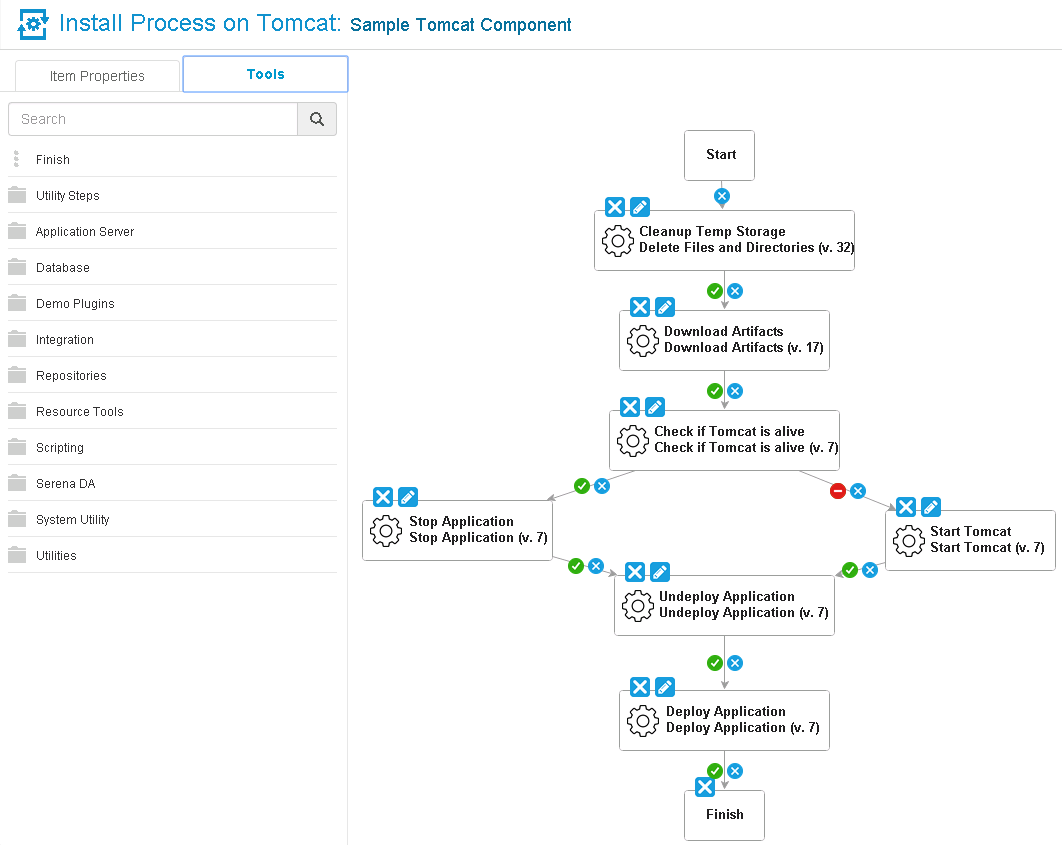Deployment Automation plugins provide tools for creating component processes. Plugins consist of configurable steps which can be thought of as distinct pieces of automation. Plugins integrate many third-party tools into Deployment Automation, such as application servers and software configuration management products.
By combining steps in the Deployment Automation editor, you can create fully-automated deployment processes. For example, the Tomcat and WebSphere plugins provide steps that start and stop those servers, install and uninstall applications, as well as perform other tool-specific tasks.
Each plugin step consists of a number of properties, a command that performs the function associated with the step, and post-processing instructions, which typically are used to ensure that expected results occurred. Step properties can serve many purposes, from providing information required by the step's command, to supplying some or all of the actual command itself.
When you create a process, you drag steps onto the editor's design area and define their properties as you go. Property values can be supplied when defining a component process or at run-time. The process flow is defined by drawing connections between steps.
In the following figure, you can see a series of plugin steps and the connections between them. For information about creating component processes and creating your own post-processing scripts, see the Deployment Automation User's Guide.
